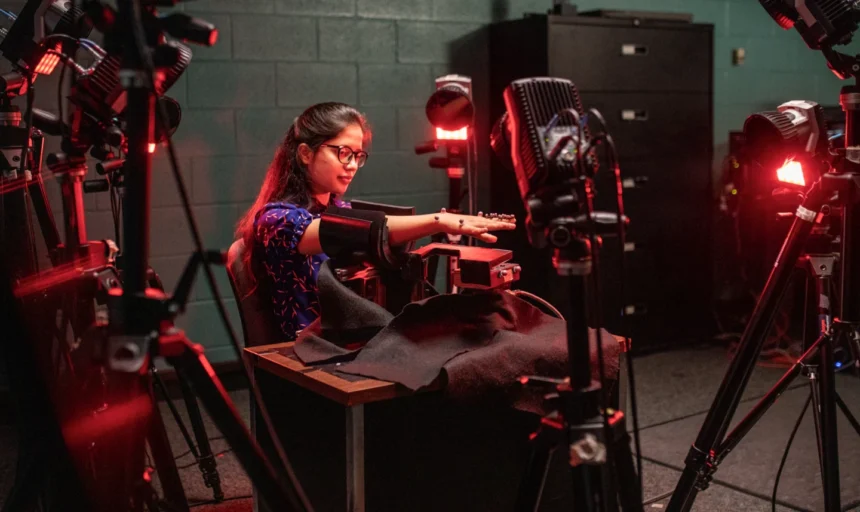Artificial intelligence, or AI, is supposed to make life easier. For individuals who stutter or have common speech disfluencies, however, using voice-activated AI technologies like Siri or Alexa can be an annoyance. And when calling a doctor’s office or other automated service, the annoyance can become more serious.
That’s why a team of MSU researchers is building an app that will make voice-activated artificial intelligence accessible to people with speech disfluencies. Initially focusing on stuttering, their work aims to improve voice technology for everyone. The interdisciplinary team includes experts representing engineering, communicative sciences and disorders, psychology and, critically, people who stutter.
“For me, this technology is about more than convenience,” says Jia Bin, an MSU doctoral student from China who leads the East Lansing chapter of the National Stuttering Association and belongs to the World Stuttering Network, “it’s about being truly heard. As someone who stutters, I’ve often felt unseen by voice tech. Being part of the HeardAI team means I get to help change that. I’m not just a research assistant — I bring my lived experience. It’s empowering and healing.”
“Our primary goal is enhancing speech recognition systems to handle the broad spectrum of natural speech, benefiting all users who interact with voice AI,” says Nihar Mahapatra, an associate professor of electrical and computer engineering at MSU and principal investigator on the project.
The HeardAI team includes scholars, students, and community members representing diverse backgrounds, including (from left): Nihar Mahapatra, Jia Bin, Caryn Herring, Anne Marie Ryan, Megan Arney, J. Scott Yaruss and Hope Gerlach-Houck.
Also on Mahapatra’s team is Ann Marie Ryan from the Department of Psychology; J. Scott Yaruss from the Department of Communicative Sciences and Disorders; as well as Hope Gerlach-Houck from Western Michigan University’s Speech, Language and Hearing Sciences; and Caryn Herring, the executive director of Friends: The National Association of Young People Who Stutter.
The project is funded by the National Science Foundation Convergence Accelerator program, which supports user-driven research projects that address major challenges facing society. “That’s the really cool part,” says Herring. “Individuals who stutter and the larger stuttering community have a say. They have a role in what we are going to develop. We’ve gotten input from people who stutter from the start.”
“HeardAI’s work is not just about fixing a technical flaw, it’s about shifting the narrative,” says Bin. “Stuttered voices matter. People who stutter don’t have to adapt to technology, technology will adapt to us.”
More than 3 million people in the U.S. and 80 million people worldwide have a stutter. The team’s HeardAI app will include flexible solutions for individuals interacting with voice-AI systems like Siri, developers creating accessible voice AI services and organizations relying on accurate automatic speech recognition transcripts. It is not only people who stutter who will benefit from this technology — this research could also be a springboard to helping people with a wide range of speech differences and, ultimately, everyone who uses this technology.
For Mahapatra and his team, this innovation isn’t simply about convenience; it’s about advancing speech recognition technology to accurately handle the full spectrum of human speech patterns.
By developing technology that accurately understands the nuances of human speech, MSU’s HeardAI project is creating voice interfaces that are more accurate, responsive, and beneficial for everyone.
Read more on MSUToday.











